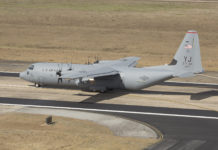From guns and ammunition, to body armour, drones, vehicles, anti-terror crash barriers and much more, the list of off-the-shelf equipment, made for either military or policing purposes, but which can equally and effectively be adopted and used by the other, is a long one.
The operational worlds of military and policing can sometimes mirror one another in tactical approach, technological requirements, as well as other factors, depending on the situation. So, when it comes to equipment procurement there are increasing opportunities for tried, tested and already-available solutions to be adopted quickly, off the shelf, by one or other of these security segments.
This article takes a look at some of the challenges and controversies in the Police off-the-shelf (POTS) and Military off-the-shelf (MOTS) dual-use technology world and, in the run-up to the GPEC General Police Equipment Exhibition and Conference at the end of May in Frankfurt, at a handful of the kinds of systems that fall under this umbrella terminology from just a few of the exhibitors who will be at the event.
Dual-Use Can Be Controversial
POTS and MOTS dual-use technologies are those systems that increasingly find their ways into the hands of one of these entities from the inventory, or intended inventory, of the other. When it comes to military equipment and ‘surplus’ being adopted by police forces, this can be a more controversial direction of travel for product on this two-way street, and has raised questions in recent years about the militarisation of police forces in several nations around the globe. In the US, for example, during the Trump Presidency, there was a roll-back on limitations introduced during the Obama years for the uptake of military gear by local municipal and state police forces, with at least one executive order removing federal accountability as to how such military-style equipment was to be used at local level.
The Department of Defense (DoD) so-called 1033 Programme, and similar initiatives, have been key enablers in encouraging and facilitating the transfer of surplus military equipment to civil law enforcement around the country. Since the 1033 inception in 1996, some 10,000 civil policing jurisdictions had received more than US$7Bn of military-grade equipment by late 2021. Indeed, militarisation of US police goes back to the Reagan-era war on drugs when one programme informally began giving surplus military equipment from the Pentagon to police departments across the US and this initiative became known as the 1033 programme, which was formalised in Congress in 1996.
However, from body armour to armoured vehicles, together with the training to use them, altered perceptions of the police as quasi-military units has, in some cases, had a deleterious impact on police/community relations. Certainly, with the right training, there are many overlapping items of dual-use military kit that can and have been appropriately deployed by the police, such as:
- drones
- body armour
- optical day/night vision systems
- search and rescue equipment
However, more offensive military systems together with military training regimes, have sometimes resulted in heavy-handed military tactics being inappropriately employed by local law enforcement when dealing with age-old civil/domestic scenarios, once handled satisfactorily by the likes of Officer Krupke and Car 54.
The policing of protests and execution of standard domestic search warrants, for example, have seen some of the most high-profile uses of military-style equipment and tactics, and Special Weapons and Tactics (SWAT) teams also now appear more militarised than ever. During the Obama era, however, there had been efforts to improve oversight and accountability of those agencies responsible for the transfer of military equipment to the police, to ensure what was transferred was needed and used appropriately. A working group set up at that time taking input from across the law enforcement spectrum listed a number of prohibited items that should not find their way into the hands of the police. Such items included bayonets, grenade launchers, weaponized aircraft. An additional list of controlled items that could still be procured by the police, though under strict circumstances and only after the provision of justification as to why such items were needed, was also drawn up. The use of controlled items required full and proper training and ongoing reporting as to how the items were being used, although most law enforcement agencies involved already had in place stringent training policies for such equipment; and while these new accountability reforms did ensure improved oversight, no requests from US law-enforcement for controlled items have, as far as is known at time of writing, been prevented in recent years.
Case Studies
But this trend of police militarisation and the transfer of dual-use tech, is not just the preserve of the US. In other countries, too, police have adopted military-style tactics and equipment, from Colombia, to Nigeria, Hong Kong, to Indonesia, and back to several European nations, including Germany. Indonesia’s Mobile Brigade Corps and Special Detachment 88, for example, are heavily-armed paramilitary-style units, which form part of the Indonesian Police. Then there is the GSG-9, an elite German Special Forces, counter-terrorism, policing unit created as a police unit, rather than a military unit to overcome the German federal law prohibiting use of military forces against the civilian population. And while it is controversial that policing has become increasingly militarised around the world, it has created many opportunities for the transfer of dual-use off-the-shelf technologies, though accountability and correct, controlled use of systems is surely prudent.
English Countryside – More Dual-Tech than Pastoral
In the UK, an example of a major police unit adopting increasingly military-style equipment and tactics is the Civil Nuclear Constabulary (CNC), a branch of the Department for Business, Energy and Industrial Strategy, which is well resourced with some 1,100 armed officers tasked with guarding the UK’s nuclear energy facilities. Equipped with such tech and equipment as body armour, high-powered assault weapons, drones and other surveillance systems, the CNC is one of the most critical specialist policing units in the UK – for which the adoption and use of military-grade OTS equipment is most suited and justified.
That said, other challenges face UK police forces, including that of rural, organised crime, which targets high-net-worth individuals and their country cribs, as well as stately homes. In addition, the theft of farm and construction machinery is on the rise with organised gangs stealing items such as tractors, diggers, generators and other machinery, often to order, and sometimes for export to eastern Europe. In 2019 alone, rural crime cost the UK £54M, of which nearly £10M was due to farm vehicle theft. So, in the summer of 2021, a new specialist police unit was created to combat the situation — the Agricultural and Construction Equipment (ACE) unit – with the aim to monitor and prevent such crimes crime. Helping them to do this, equipment such as commercial and military-grade drones together with optical solutions such as latest-generation night vision goggles (NVGs) and other image intensification (II) systems are being employed; such equipment is already actively in use with other rural police units, such as the Avon and Somerset Police Rural and Wildlife Crime Unit, which uses drones and NV/II devices in the course of its often-nocturnal efforts to stamp out widespread wildlife crime, poaching and machinery theft. There are currently around 300 drones in use across the UK with different police forces.
In late 2020, the UK Home Office actually unveiled plans for the National Police Air Service (NPAS) to adopt Elbit’s Hermes 900 military-grade drone to replace helicopters for missions in which unmanned systems would be suitable. The Israeli system trialled by the NPAS and the Maritime and Coastguard Agency, has a 15-metre wingspan, weighs 970 kg, and can fly for up to 36 hours at altitudes of 30,000 feet. The trial included a series of simulated police aviation scenarios currently conducted by 19 helicopters and four fixed-wing aircraft in support of the 43 police forces of England and Wales and British Transport Police. Procurement status is unclear at this time.
Going Forward
But once again, the militarisation issue raises its head, for while the UK’s Home Office initially looked at the system in the context of replacing police fixed-wing aircraft and helicopters in the pursuit of suspects, looking for missing persons, or observing major incidents on the ground, such as road traffic accidents, government officials suggested that surveillance of protests and other peaceful, legitimate events might also be scenarios for which the Hermes 900 could be used and Home Office studies are currently in play looking at drones with facial recognition capabilities, which may become controversial if and when more details emerge.
Tim Guest




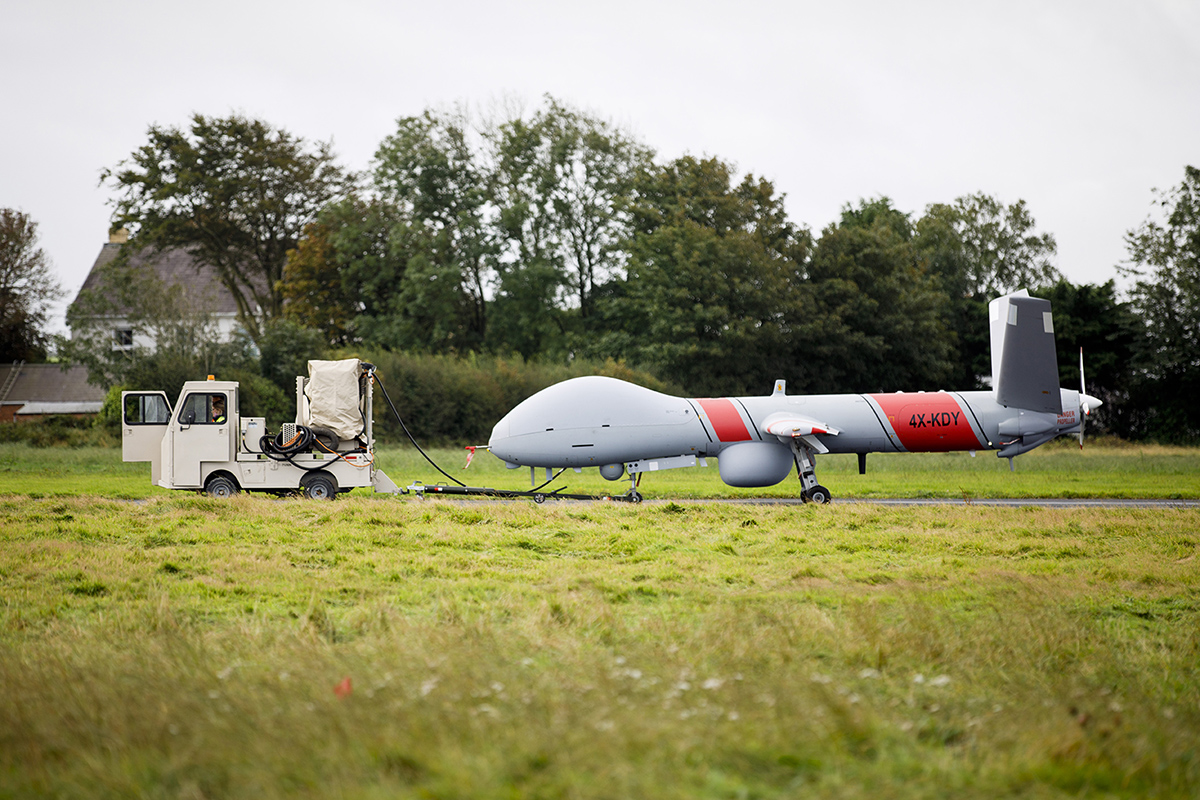




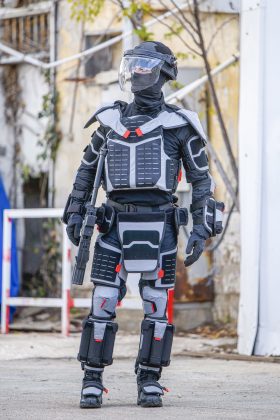


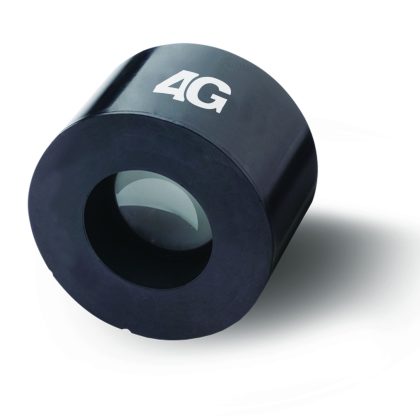
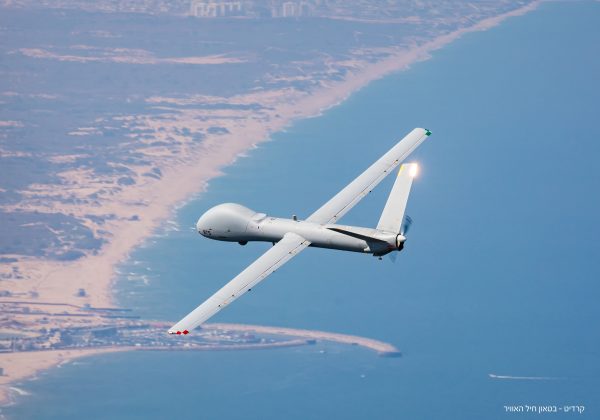

![NGSRI: Progressing towards Stinger’s replacement Lockheed Martin and Raytheon are competing for their respective interceptor designs to be the US Army’s eventual new M-SHORAD Increment 3 missile. Illustrated: LM’s interceptor launched in dismounted configuration. [Lockheed Martin]](https://euro-sd.com/wp-content/uploads/2025/09/1-OPENER-NGSRI-composite-image-2-Credit-Lockheed-Martin-Kopie-218x150.jpg)
![IFPC Increment 2: Filling the medium-range gap The IFPC Inc 2 AD system is intended to defend fixed and forward operating bases against the latest and emerging aerial threats including rotary and fixed-wing, UAVs and cruise missiles, most likely using a second, more capable interceptor. [US Army]](https://euro-sd.com/wp-content/uploads/2025/09/1-IFPC-Increment-2-system-Credit-US-Army-Kopie-218x150.jpg)
![Ballistic missile moves A 9M723 Iskander-M SRBM being launched from the Kapustin Yar proving ground in March 2018. [Russian MoD]](https://euro-sd.com/wp-content/uploads/2025/08/Iskander-M-SRBM-launches-Russian-MoD-Kopie-218x150.jpg)
![Europe’s dash to procure rocket artillery Dutch Army PULS validation test firings, July 2025. Several European NATO armies are racing to build their rocket-artillery inventories after years of complacency and in the face of old dangers having returned to the continent. Achieving this quickly means systems from various suppliers are being procured across the Alliance. [Dutch MoD]](https://euro-sd.com/wp-content/uploads/2025/08/1-Dutch-Army-PULS-validation-test-firings-July-2025-Dutch-MoD-Kopie-218x150.jpg)
![Kaan progresses, bolstered by international interest Kaan’s first prototype taking off for its 13-minute, maiden flight in February 2024, when it reached 2,438 m (8,000 ft) and a speed of 426 km/h (230 kn). The prototype’s second flight took place a few months later, in May, when it reached 3,048 m (10,000 ft). [TAI]](https://euro-sd.com/wp-content/uploads/2025/07/1-Kaan-first-prototype-on-maiden-flight-Feb-2024-218x150.jpg)
![Key programmes bolster Türkiye’s defence-export boom Secretary of the SSB, Prof. Dr. Haluk Görgün, said that Türkiye was building a “ground-breaking ecosystem in technology exports for the future”. [TiM]](https://euro-sd.com/wp-content/uploads/2025/07/2-Prof-Dr-Haluk-Gorgun-Jan-2025-Credit-TiM-Kopie-218x150.jpg)
![Improving the odds of survival Pictured: Only once pre-flight checks have taken place to ensure protective gear, such as G-suits, harnesses, helmets, parachutes and more, is adjusted and is working properly, will Warthog pilots head out onto the tarmac for take-off. [USAF/2Lt Benjamin Williams]](https://euro-sd.com/wp-content/uploads/2025/06/1-In-the-cockpit-A-10C-taxis-for-take-off-Credit-USAF-2Lt-Benjamin-Williams-Kopie-218x150.jpg)
